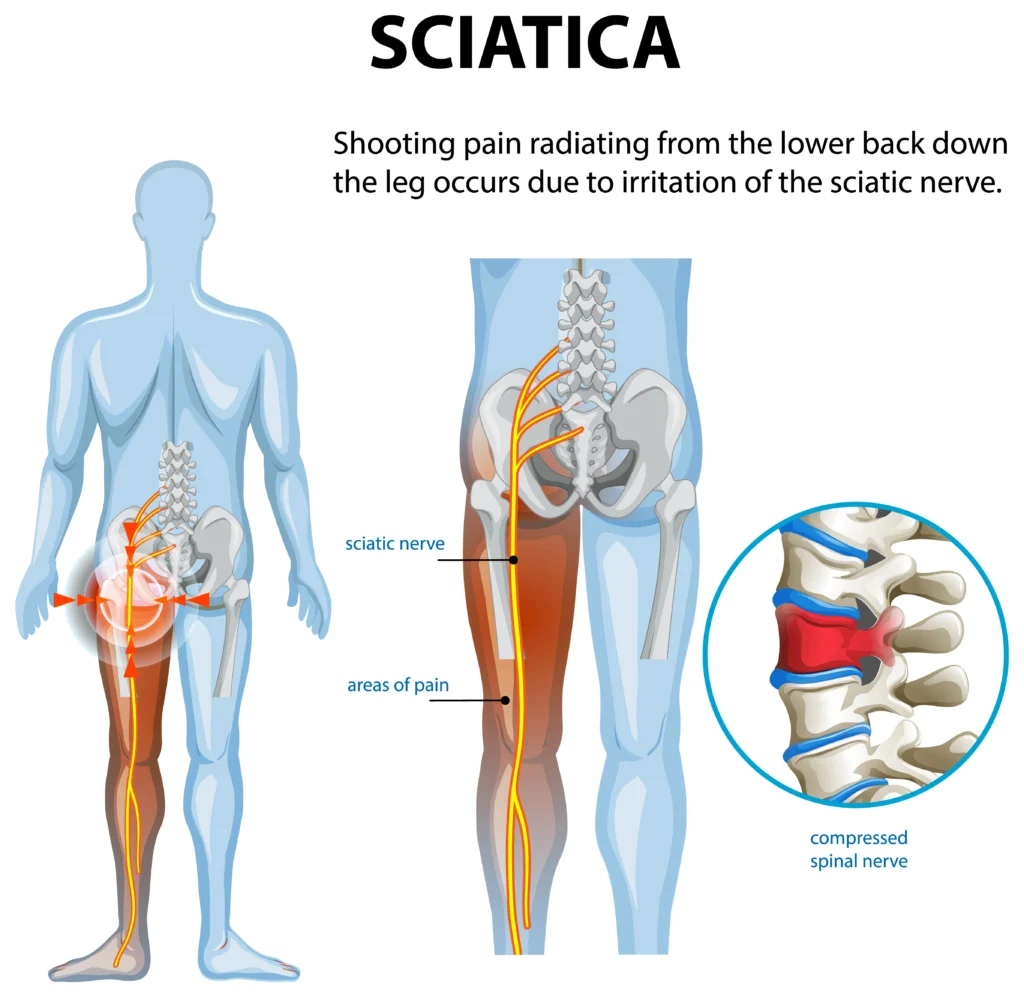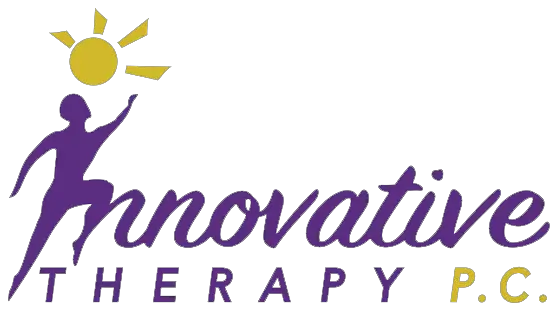Sciatica can be a debilitating condition that affects millions of people. It causes pain that radiates from the lower back down to the legs. This pain often results from nerve compression and can range from mild discomfort to sharp, intense pain that disrupts daily life. Understanding the causes and symptoms of sciatica is essential to finding relief.
The good news is that various treatments are available, from physical therapy and medications to more advanced procedures like surgery. Tailoring these treatments to your condition can lead to long-term relief and improve your quality of life.
Keep reading if you’re struggling with sciatica or want to learn more about pain management for sciatica. I’ll walk you through the best pain management strategies for sciatica so you can get back to living pain-free.
What is Sciatica?

Sciatica is pain that radiates along the sciatic nerve, which runs from your lower back through your hips, buttocks, and down each leg. It usually affects only one side of the body. It can result in discomfort, tingling, or weakness in the affected leg. Sciatica occurs when the sciatic nerve becomes compressed or irritated, often due to a herniated disc, spinal stenosis, or muscle spasms.
Understanding the Sciatic Nerve
The sciatic nerve is the largest in the body. It originates in the lower back, at the spinal cord, travels through the buttocks, down the legs, and branches into smaller nerves. When any part of this nerve is compressed or irritated, pain can radiate along its path, typically felt in the lower back, buttocks, and legs.
Common Causes of Sciatica
- Herniated Discs: A bulging or ruptured disc can press on the sciatic nerve, leading to pain.
- Spinal Stenosis: Narrowing the spinal canal can cause compression of the nerve roots.
- Degenerative Disc Disease: As the spine ages, discs can wear down, leading to sciatica.
- Piriformis Syndrome: Tightness or spasms in the piriformis muscle can irritate the sciatic nerve.
How is Sciatica Diagnosed?
Accurate diagnosis is crucial for effective pain management. Doctors will perform a thorough examination and may use imaging tests to confirm the cause of sciatica.
Medical History and Physical Exam
The doctor will ask about your symptoms, lifestyle, and recent injuries. During the physical exam, they will assess your reflexes, muscle strength, and sensory responses to help pinpoint the location of nerve compression.
Diagnostic Imaging
- X-rays: Used to look for bone-related causes of sciatica, such as spinal misalignment or fractures.
- MRI and CT Scans: Provide detailed images of soft tissues, including discs and nerve roots, allowing doctors to identify herniated discs or spinal stenosis.
- Electromyography (EMG): Measures the electrical activity of muscles to assess nerve function.
Why Early Diagnosis Matters
Early diagnosis allows for faster intervention and more effective treatment. Left untreated, sciatica can lead to chronic pain and long-term nerve damage. Identifying the cause early can lead to better management and prevent the condition from worsening.
Pain Management for Sciatica

Sciatica pain can vary in intensity, and the treatment approach should be tailored to the severity and underlying cause of the condition. Below are the most common pain management strategies.
Non-Surgical Treatments
- Physical Therapy
- Physical therapy plays a key role in relieving sciatica. A therapist will guide you through exercises designed to strengthen your core muscles, improve posture, and reduce nerve compression.
- Typical exercises include pelvic tilts, leg raises, and stretching to improve flexibility.
- Chiropractic Care
- Chiropractic adjustments help realign the spine, easing pressure on the sciatic nerve. Chiropractic treatments focus on spinal manipulation to improve mobility and relieve pain.
- Medications
- NSAIDs (Non-Steroidal Anti-Inflammatory Drugs): These over-the-counter medications, such as ibuprofen, help reduce inflammation and pain.
- Muscle Relaxants: Medications like cyclobenzaprine can help relieve muscle spasms associated with sciatica.
- Epidural Steroid Injections: For severe pain, doctors may recommend steroid injections around the spine to reduce inflammation and relieve pressure on the sciatic nerve.
- Heat and Cold Therapy
- Applying a heating pad or ice pack to the affected area can relieve pain. Cold therapy helps reduce inflammation, while heat relaxes tight muscles.
Surgical Treatments
Surgery is typically reserved for cases where non-surgical treatments have failed or if sciatica is caused by severe nerve compression.
- Discectomy: A procedure where part of a herniated disc is removed to relieve pressure on the sciatic nerve.
- Spinal Fusion: In severe degenerative disc disease or spinal instability, two or more vertebrae may be fused to provide stability.
- Laminectomy: Removal of part of the vertebra (lamina) to widen the spinal canal and relieve pressure on the nerves.
Tailored Treatments for Long-Term Relief
One-size-fits-all treatments rarely provide lasting relief for sciatica. Tailoring your treatment plan to address your specific condition and lifestyle is key to long-term pain management.
Personalized Pain Management Plans
- Customized Exercises: A tailored physical therapy regimen targeting specific symptoms can make a significant difference. A personalized plan might include stretches for the lower back, strengthening exercises for the core, and flexibility routines.
- Medication Adjustments: Your doctor might adjust medication based on your pain level, tolerance, and side effects.
Combining Treatments for Optimal Relief
Combining therapies can lead to better results. For example, combining chiropractic care with physical therapy can help restore mobility and strengthen muscles. At the same time, medication can control inflammation and pain in the short term.
Lifestyle Changes for Long-Term Relief
- Posture and Ergonomics: Proper posture and ergonomic adjustments at work and home can prevent strain on the lower back and reduce the chances of sciatica flare-ups.
- Regular Exercise: Incorporating low-impact exercises like walking or swimming into your routine helps keep the back muscles strong and flexible.
- Weight Management: Maintaining a healthy weight reduces pressure on the spine and helps prevent future sciatica issues.
Preventing Future Sciatica Pain
Once sciatica pain has been managed, prevention becomes the focus. Here are some tips to prevent sciatica flare-ups:
| Prevention Tip | Description |
|---|---|
| Strengthen Core Muscles | Exercises that strengthen the abdominal and back muscles help support the spine. |
| Maintain Good Posture | Avoid slouching and keep your back straight to prevent strain on the spine. |
| Lift Properly | Bend your knees when lifting, not your back, to reduce pressure on the lower spine. |
| Stay Active | Regular movement helps keep muscles flexible and prevents stiffness. |
Exercise Tips for Sciatica Prevention
- Pelvic Tilts: Strengthen your lower back and abdominal muscles.
- Knee to Chest Stretch: Relieves pressure on the sciatic nerve.
- Seated Spinal Twist: Improves flexibility and reduces tension.
FAQs For Pain Management for Sciatica
Can Sciatica Be Fully Healed?
While sciatica can be managed and treated effectively, complete healing depends on the cause. Many people experience significant relief with proper treatment, although flare-ups can occur.
How Long Does Sciatica Pain Last?
Sciatica pain typically lasts a few weeks, but chronic sciatica can persist for several months. With the proper treatment, many people see significant improvement within 4-6 weeks.
When Should I Seek Surgery for Sciatica?
Surgery is generally recommended if conservative treatments fail or if there is severe nerve compression causing loss of function (e.g., loss of bowel/bladder control).
Can Poor Posture Cause Sciatica?
Poor posture can contribute to sciatica by placing undue stress on the spine and nerve roots. Maintaining proper posture can help prevent flare-ups.
Conclusion
Managing sciatica requires a multifaceted approach, including effective pain management and long-term prevention strategies. By tailoring treatments to your needs and making lifestyle changes, you can find lasting relief and improve your overall quality of life. Whether through physical therapy, medication, or surgery, the right approach can help you get back to living without pain.
Find Effective Sciatica Pain Relief at Innovative Therapy P.C. in Dallas, TX
Are you tired of dealing with sciatica’s constant discomfort? At Innovative Therapy P.C. in Dallas, TX, we specialize in pain management for sciatica, offering tailored treatments to help you find long-term relief. Our expert team will create a personalized plan that targets your specific needs, combining physical therapy, medication, and other treatments to relieve pain and prevent future flare-ups.
Don’t let sciatica control your life any longer! Contact Innovative Therapy P.C. today to schedule your consultation and take the first step toward a pain-free future. Let us help you live the life you deserve, free from sciatica pain!





